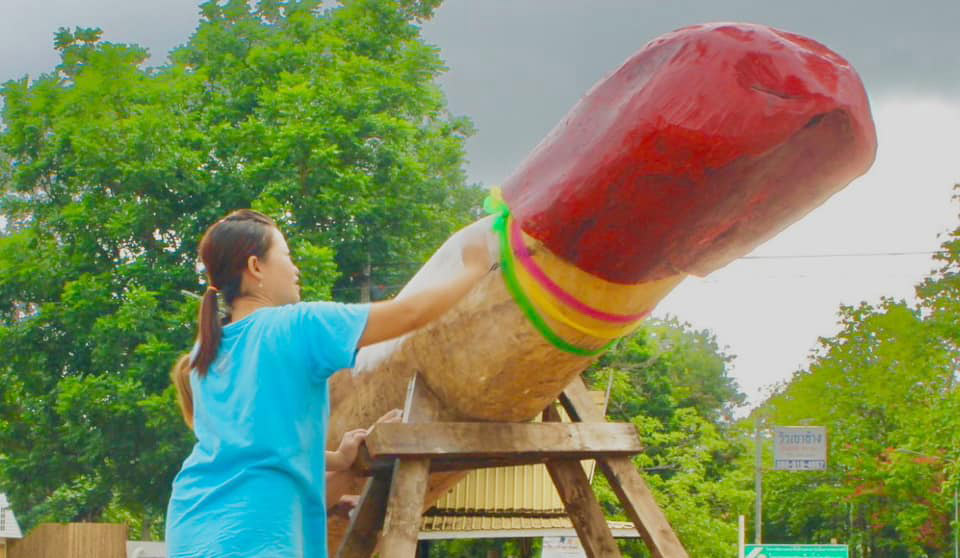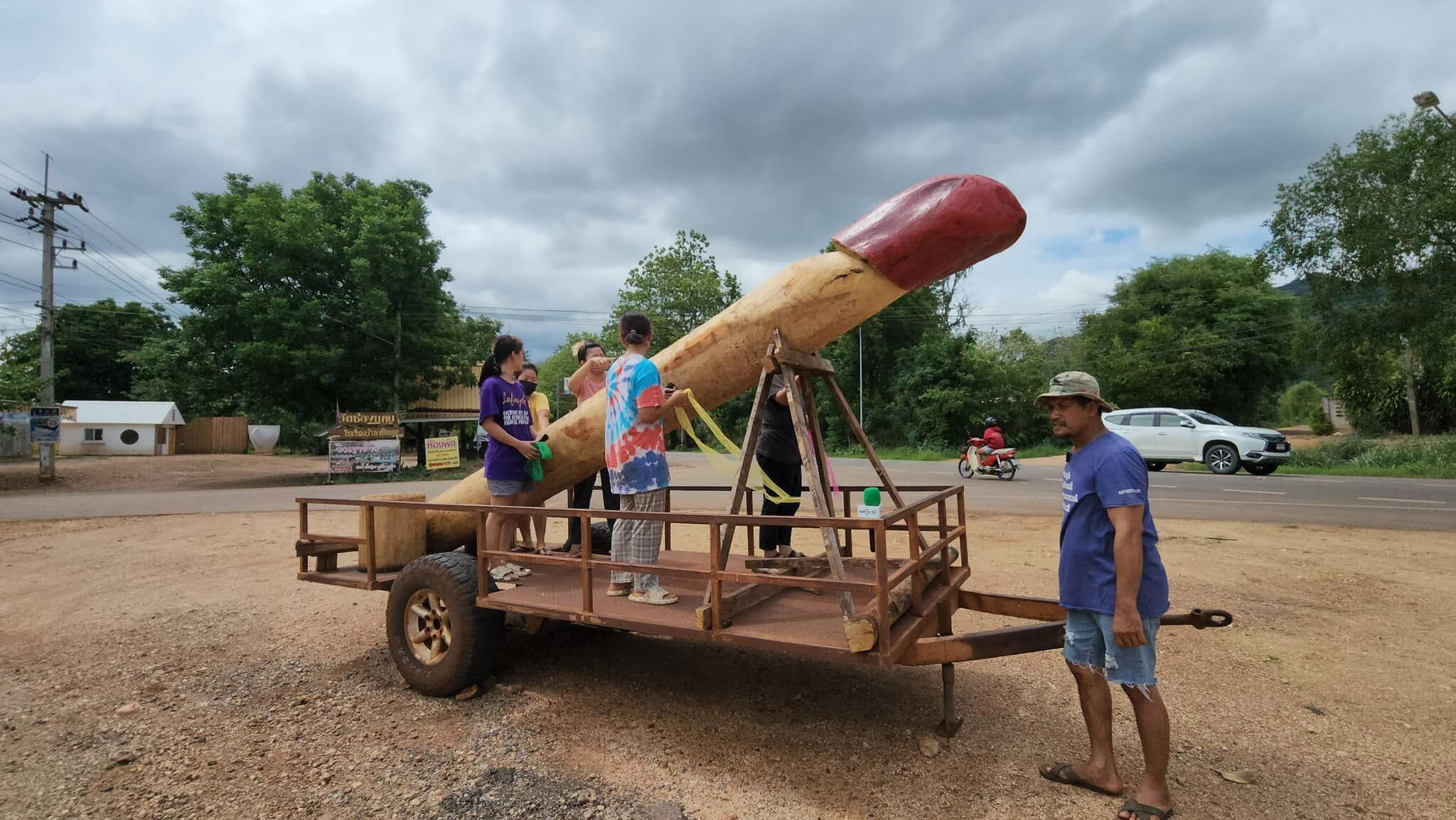In a rather eccentric display, villagers have constructed a monument shaped like a phallus to aid in summoning rainfall.
The locals meticulously carved the wooden structure, which weighs a whopping 600 kg (1,323 lbs), and positioned the tip of the wooden phallus towards the desired direction for rain to fall.
This unusual monument was erected by the villagers in Sai Yok District, Kanchanaburi Province, Thailand, with the intention of appealing to the Devas, powerful divine beings within the Buddhist tradition.

Referred to as Palad Khik in Thailand, these phallic sculptures symbolize a revered surrogate penis. Considered representations of Shiva, the length of these amulets can range from a few inches to several feet. They are primarily associated with attracting good fortune and warding off malevolent spirits.
One villager named Manote shared with the local media that the construction of the wooden monument was prompted by a scarcity of rainfall in the region, which had caused difficulties for those involved in agriculture.
Manote explained, “Our aim was to capture the attention of the Devas in heaven and make them realize the urgent need for rain. Hence, we crafted this large wooden phallus to catch their notice.”
According to his account, after conducting a ritual, rain did fall, albeit in a nearby forested area rather than the farms and plantations that were in dire need of it.
Nevertheless, the villagers conducted a procession, parading the phallic sculpture throughout the village as a gesture of gratitude towards the Devas.
Manote asserted that rain will only fall in areas indicated by the tip of the symbolic structure. As a result, the wheeled monument requires frequent adjustments to guide the rain to the intended locations.
Apart from the practice of constructing phallic monuments to summon rain, different regions in Thailand have their own unique traditions. For instance, in the northeastern provinces, locals often organize rocket festivals, while in other areas, residents parade a live cat in a cage to invoke rainfall.
It’s worth noting that these rituals reflect the beliefs and customs of the local communities, demonstrating their unconventional methods of seeking relief from challenging weather conditions.






